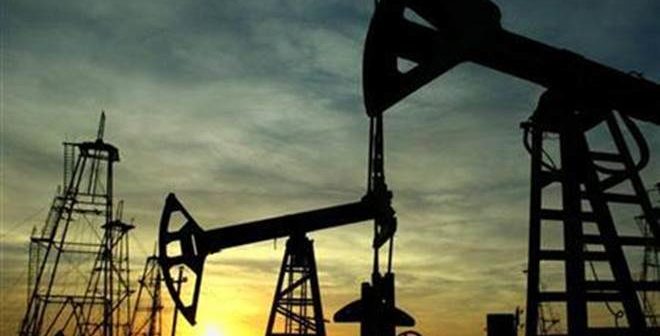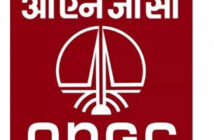Contribution of CPSEs has come at a time when impact of slackening global economy is also quite vibrant on CPSEs. It is a matter of fact that turnover of CPSEs has decreased in FY16 by 7.04% to Rs 18,66,944 crore from Rs 19,68,311 crore in FY15. Interestingly despite decrease in revenue, profitability of profit making CPSEs has also appreciated and net profit increased by 10.22 % to Rs 1,44,523 crore in FY16 from Rs 1,30,363 crore in FY15. On the other hand aggregate loss of loss making CPSEs increased from Rs 27498 crore to Rs 28,756 crore during the same period. Thereby aggregate net profit reported by all 244 CPSEs is Rs 1,15767s crore as against Rs 1,02,866 crore reported in FY15, thus showing a spurt in overall profit of 12.54%. interestingly number of profit making CPSEs have increased from 159 in FY15 to 167 in FY16, Explains Amit Bhanot in the Cover Story of Governance Democracy&Politics (GDP) Magazines’ 2nd Annual PSU Handbook 2017
Do you really know the real worth of Indian economic might? Do you know what is the importance of current stature of Indian economy at the global platform? Do you really trust the financial muscle power of India? Do you really feel the way China backtracked in Doklam, is just afluke or it shows the ever-increasing dominance of India globally?
As an Indian you may find it difficult to find clear cut answers to all the above questions, but if you dig deep into the reasons then we can easily find that India really is the “Sweat Spot” in the global financial world that is marred by various factors like tumbling growth, unemployment, international border conflicts, lower consumption, over supply and above all aggregate purchasing power. In such a testing times, Indian economy has come out with such a flying colour that almost all the global powerhouse have made a beeline to come to India and put their stakes on us for their own growth and prosperity. It is quite interesting that at a time when slowdown has engulfed the global economy and all the big economies like Europe, China, Japan are struggling hard to keep their growth engines on track, Indian GDP is growing at the fastest rate of 7.1% in FY17 and slated to pick further to a double digit growth due to untiring efforts of central government under the iconic leadership of PM Narendra Modi.
Importantly, Growth of Indian economy is considered quite vital not only for the wellbeing of Indian citizen and creation of jobs but for the world as well, as India, due to its mammoth consumption power and strong demographic profile considered as a “sweet spot” of Global Economy. What is more encouraging is that despite a bleak global economic scenario, Indian government is trying hard to put India’s growth engine back on track via various initiatives like Implementation of GST, Make in India, Mudra Bank Initiative, various reforms, liberalization of FDI limits in various sensitive sectors like defense, manufacturing, insurance etc. Also crackdown against black money in the form of Demonetization has not started showing positive results,as tax payers base has increased by whooping 25% and tax collection has shot up by mammoth 42% as on August.
CPSEs: Silent Revolution Underway
But when we decipher the reasons for such a sustainable growth of Indian economy, along with all the efforts of government and factors visible, there is another space that is working tirelessly and silently pushing up GDP in a sustainable manner. A silent revolution of sorts, as this sector is consistently performing since independence and carried on the developmental agendas in areas like Electricity, Heavy and Critical engineering, Crude and Petroleum, telecommunication, Finance, Steel etc., which always remained critical for the development of the country. Today we know this sector with the name of CPSEs or Central Public Sector Enterprises.
Often lamented by so called advocates of private sector as “inefficient” block, CPSEs were set up to serve the broad macroeconomic objectives of higher economic growth, self-sufficiency in production of goods and services, long term equilibrium in balance of payments and low and stable prices besides meeting certain socioeconomic obligations. Interestingly there were only five CPSEs with a total investment of Rs 29 crore at the time of the First Five Year Plan but now there are 320 CPSEs (excluding 7 Insurance Companies) with a total investment of whooping Rs 11,71,844 crore.
Prominent Contributor Towards GDP Growth
In fact it is not only about appreciation in the investment that has been made in the CPSEs and wealth creation happened to investors, but the amount of contribution these CPSEs do to national GDP is quite significant. In fact according to an estimate, contribution of all CPSEs together to GDP is more than thecontribution of various big states taken together. If we go by the Net Value Addition by CPSEs to GDP at current prices, it has increased from Rs 6,18,531 crore in FY15 to Rs 7,70,976 crore in FY16 recording a marginal growth rate of 24.65% in nominal terms. So share of net value addition to GDP stood at 5.68% in the year FY16 as against 4.95% in FY15. On the other hand share of gross value addition by CPSEs to GDP is even more and it includes net value addition, depreciation & impairment. It stood at 6.23% in FY16 as against 5.58% in FY15, while value wise it remained at Rs 8,46,016 crore in FY16, whereas it was at Rs 6,96,585 crore in FY15.
Importantly, this contribution of CPSEs has come at a time when impact of slackening global economy is also quite vibrant on CPSEs. It is a matter of fact that turnover of CPSEs has decreased in FY16 by 7.04% to Rs 18,66,944 crore from Rs 19,68,311 crore in FY15. Interestingly despite decrease in revenue, profitability of profit making CPSEs has also appreciated and net profit increased by 10.22 % to Rs 1,44,523 crore in FY16 from Rs 1,30,363 crore in FY15. On the other hand aggregate loss of loss making CPSEs increased from Rs 27498 crore to Rs 28,756 crore during the same period. Thereby aggregate net profit reported by all 244 CPSEs is Rs 1,15767s crore as against Rs 1,02,866 crore reported in FY15, thus showing a spurt in overall profit of 12.54%. interestingly number of profit making CPSEs have increased from 159 in FY15 to 167 in FY16, whereas number of loss making CPSEs have also increased from 76 to 78 during the same period.
CPSEs Mantra: Development Before Profit Making
Along with other public sector majors such as State Bank of India in the banking sector, Life Insurance Corporation in the insurance sector, Post & Telegraph in telecom sector and Indian Railways in transportation, the CPSEs are leading companies of India with significant market-shares in sectors such as petroleum ( ONGC, GAIL and Indian Oil Corporation), mining ( Coal India and NMDC), power generation ( NTPC and NHPC), power transmission (Power Grid Corporation of India Ltd.), nuclear energy ( Nuclear Power Corporation of India ), heavy engineering ( BHEL), aviation (Hindustan Aeronautics and Air India), storage and public distribution ( Food Corporation of India and Central Warehousing Corporation), shipping and trading ( Shipping Corporation of India Ltd, and State Trading Corporation of India), steel ( Steel Authority of India and Rashtriya Spat Nigam) and telecommunication(BSNL and MTNL).
It is no secret that PSUs have contributed significantly in the infrastructure development of the country as they have entered into those sectors, in which no other corporate would dare to enter, particularly in infrastructure, roads, railways, airport, power plants etc.In fact the basic difference between the sheer thought process with which PSUs were conceived, differentiate these organization from the private players and due to this they have been blamed as “inefficient.” Actually they may be inefficient in putting profit motive before nation building but many companies like ONGC, NTPC,Coal India, BHEL, IOC, REC, PFC have successfully challenged the profitability and income credentials of private companies and today even become the industry benchmark for the private players.
Despite this their ideology remained that of holistic social development and the kind of infrastructure development that these corporate juggernauts made in rural areas in last six decades, really calls for applause. Even after liberalization CPSEs have promoted capital investment in those areas of national importance and infrastructure, where private sector was reluctant to invest due to long gestation period and lower or nil profitability.
Financial Performance Along With Employment Generation
When we talk about development and sustained progress then it is not only the financial performance that counts but the real contribution towards employment generation is also of prime importance and CPSEs have made significant contribution towards it. Since independence CPSEs remained a big employment generator and total employee strength in CPSEs during FY16 also stood at strong 12.34 lakh and this exclude contractual workers as compared to 12.91 lakh in FY15. Though total strength of employees in CPSEs has gone down by 4.42% due to superannuation, voluntary retirement etc. but salary and wages in all the CPSEs, at the same time went up during the year from Rs 1,26,777 crore in FY15 to Rs 1,28,263 crore in FY15 showing a growth of 1.17%. Financially also CPSEs stand tall in the country and created wealth for the investors but they are usually not celebrated at the bourses. Despite bleak scenario of the markets during FY16 CPSES performed handsomely. During FY16 there was decrease in market capitalization of CPSEs by 16.62% to Rs. 11,06,766 crore as on 31.03.2016 over market capitalization as on 31.03.2015 of Rs. 13,27,393 crore. Based on stock prices on Bombay Stock Exchange as on 31.03.2016, the market capitalization of 46 CPSEs stood at Rs. 11,06,766 crore. At the same time market capitalisation of CPSEs has declined from 13.08% as on 31.3.2015 to 11.68% as on 31.3.2016.
On other parameters, wealth creation by CPSEs are also unparalleled. During FY 16 net worth of all CPSEs went up from Rs 9,84,409 crore in FY15 to Rs 10,20,737 crore in FY16 registering a growth of 3.69 %, while they have contributed to Central Exchequer by way of excise duty, customs duty, corporate tax, interest on Central Government loans, divided and other duties and taxes. This has increased from Rs 2,00,593 crore in 2014-15 to Rs 2,78,075 crore in 2015-16, a growth of whooping 38.63%, while foreign exchange earnings through exports of goods and services decreased from from Rs 5,44,561 crore in 2014-15 to Rs 3,88,045 crore in 2015-16 showing a reduction of 28.74%.
PSUs Disinvestment Provides Vital Funds For Development
Due to fabulous financial performance and underlying value creation by PSUs, Indian Government is also banking of the CPSEs to fill its coffers by their disinvestment and strategic sale. For FY18 Finance Minister Arun Jaitley proposed to raise Rs 72,500 crore through capital receipts that comprise minority sales, strategic disinvestments as well as through listing of state-owned insurance companies. This surpasses the Rs 69,500 crore proposed two years ago. Of this target Rs 46,500 crore would come from minority stake sales through new listings as well as already listed firms. In addition, the government seeks to receive Rs 15,000 crore from strategic sales and Rs 11,000 crore through listing of state-owned insurance companies.
Also in case of moribund companies the Niti Aayog recommended quick disinvestment. Few months back Niti Aayog has identified 32 loss-making companies for strategic disinvestment, including Central Public Sector Enterprises (CPSEs) such as Bharat Pumps & Compressors, Tyre Corporation of India, Central Inland Water Transport Corporation and Bengal Chemicals & Pharmaceuticals, among others. Of these 32 companies, 10 could see strategic disinvestment right away and for the rest the suggestion is to revive while retaining a subsequent option for strategic disinvestment.
Already disinvestment of 10 percent paid-up equity of Housing and Urban Development Corporation (HUDCO) and Cochin Shipyard has been done successfully at the bourses. Also there are many companies that are there in pipeline and happening simultaneously like IRCTC, Rites, OFS of NTPC, etc.
CPSEs Performance During FY16 Vs FY15
2014-15
- Overall net profit of 234 CPSEs is Rs. 1,02,866 crore in 2014-15
- 159 CPSEs posted net profit of Rs.1,30,363 crore in 2014-15
- 76 CPSEs incurred net loss of Rs.27,498 crore in 2014-15
- Total investment in 298 CPSEs stood at Rs. 10,95,554 crore in 2014-15
- Dividend paid by CPSEs during 2014-15 is Rs. 56,527 crore
2015-16
- Overall net profit of 244 CPSEs is Rs. 1,15,767 crore in 2015-16
- 167 CPSEs posted net profit of Rs.1, 44,523 crore in 2015-16
- 78 CPSEs incurred net loss of Rs. 28, 756 crore in 2015-16
- Total investment in 320 CPSEs stood at Rs. 11,71,844 crore in 2015-16
- Dividend paid by CPSEs during 2015-16 is Rs. 70954 crore
This article is part of GDP Magazine’s 2nd Annual PSU Handbook 2017
Catch your Copy on Stands or Contact at 9871235450 or gdpindia.net@gmail.com





